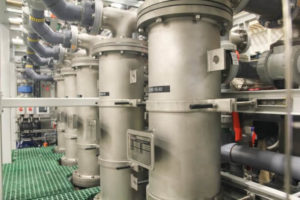
Economic Ceramic Ultrafiltration for Highly Impaired Water
This article introduces a new type of ceramic membrane system and explains how it opens the application range. An example of treatment of oil and grease in produced water is provided.
Dec 3rd 2019
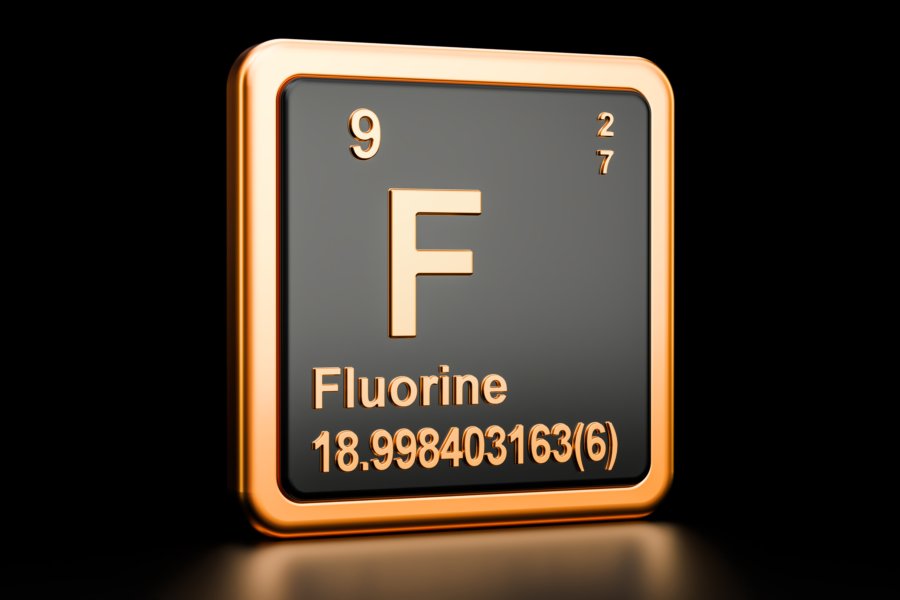
In the microelectronics industry, fluoride wastewaters are generated during hydrofluoric acid etching of semiconductors. Hydroflouric acid is also employed in the solar cell and metal-plating industries. Typical concentrations of fluoride in these wastewaters can range from 100 mg/L to more than 10,000 mg/L. In general, fluoride discharge limits are less than 20 mg/L if the wastewater can be discharged into a public sewer system, and less than 5 mg/L if the wastewater is discharged into an aquatic environment. In some jurisdictions, the fluoride discharge limit can be less than 2 mg/L. It is noted that some municipalities add fluoride to drinking water (0.5–1.5 mg/L) because of its beneficial prevention of dental cavities. However, excessive fluoride is harmful to human health causing skeletal fluorosis (bone disease).
Existing removal options for fluoride wastewaters include: 1) calcium fluoride (CaF2) precipitation and coagulation, 2) adsorption, 3) ion-exchange, and 4) membrane-based processes such as reverse osmosis and electrodialysis. An industrial wastewater with a high fluoride concentration is often treated through the CaF2 precipitation and coagulation method. Adsorption, ion-exchange, and reverse osmosis are more often used in drinking water applications and for final fluoride polishing.
An overview of the pros and cons for these fluoride removal options are summarized in Table 1.
Table 1. Comparison of Fluoride Removal Technologies
| Technology | Pros | Cons |
|---|---|---|
| CaF2 Precipitation & Coagulation (Conventional) |
• A commonly practiced method through using lime (Ca(OH)2) and/or calcium chloride (CaCl2) to precipitate calcium fluoride
(CaF2) down to its solubility limit. This is followed by aluminum based coagulation to further reduce fluoride to meet low discharge limits. • Removes other contaminants such as acid, silica, and heavy metals (cadmium, copper, chromium, lead, mercury, and zinc). |
• Two separate reaction processes with long hydraulic retention times. • CaF2 and Al(OH)3 precipitates result in fine particles that take long times to settle, requiring large sedimentation and clarification tanks. • Overdosing of lime and coagulation agents, resulting in high chemical costs and excess wet sludge. |
| Adsorption & Ion-exchange |
• High availability of adsorbent options, such as activated alumina, modified activated carbon, hydroxyapatite, zeolites, char, and fluoride specific ion exchange resin. • Reduces fluoride to 1 mg/L. • Best fit for removal of low concentrations of fluoride. |
• Not cost-effective for industrial wastewater with high fluoride concentration due to high consumption of the adsorbent and/or high cost to regenerate ion exchange resins. • Operation pH limited between 5 and 8. Other anions (e.g., chloride, nitrate, sulfate) present in the wastewater reduces fluoride removal efficiencies. • An ion exchange regeneration wastewater brine requires management. |
| Reverse Osmosis & Electrodialysis |
• Reduce fluoride to 1 mg/L. • Remove other contaminants including total dissolved solids. • Minimal chemical consumption. • More compact footprint and greater automation over other options. • A good polishing method if required. |
• Membranes are not compatible with hydrofluoric acid or fluorosilicic acid in the wastewater. • Possible membrane fouling by other inorganics and organics in the wastewater. • Pretreatment often required. • A concentrated brine reject is produced requiring management. |
During CaF2 precipitation, lime is used to neutralize any waste acids in the fluoride wastewaters. With fluoride concentrations less than 1,000 mg/L, lime is often selected as the sole calcium source to precipitate fluoride. Lime has a low solubility at 0.18% by weight so for wastewater with high fluoride concentrations it used together with calcium chloride, which has a high solubility. Excessive lime addition often results in undesired consumption of aluminum coagulants in the downstream coagulation step and increases sludge quantities.
Calcium fluoride precipitation can reduce the fluoride concentration down to about 8–20 mg/L, depending on the total dissolved solids concentration in the wastewater. A second coagulation step, using aluminum-based coagulation agents, is required to further reduce fluoride to less than 5 mg/L.
The calcium fluoride precipitation and coagulation method, however, has two disadvantages: 1) CaF2 from the precipitation step and Al(OH)3 from the coagulation step are both very fine particles, so their sedimentation and clarification times are very long, requiring large footprint clarifiers; and 2) overdosing of lime and coagulation reagents results in a higher chemical cost and a large volume of wet sludge for final dewatering treatment.
Recent technology and process improvements in chemical precipitation and filtration can address both disadvantages associated with calcium fluoride precipitation and coagulation.
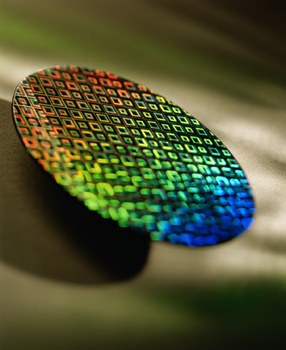
Saltworks developed a cost-optimized solution for fluoride removal using our BrineRefine advanced chemical precipitation and XtremeUF ceramic ultrafiltration systems. An example process flow diagram is presented in the figure below. The combination of BrineRefine and XtremeUF in calcium fluoride precipitation and coagulation eliminates the need for large clarification/sedimentation tanks and multimedia filtration and/or cartridge filtration, reducing footprint, maintenance and operating costs.
BrineRefine is an improvement to existing chemical precipitation for fluoride removal. BrineRefine uses intelligent controls for automated precise dosing, avoiding lime and calcium chloride under/over-dosing to precipitate CaF2. XtremeUF is an ultra-robust ceramic ultrafiltration system that self-cleans while it operates. XtremeUF filters the CaF2 and Al(OH)3 fine particles from the coagulation process, leaving a clean water filtrate that could be discharged or reused directly in hydrofluoric acid etching of semiconductors. BrineRefine and XtremeUF are fully integrated into a single smart and automated plant.
Contact Saltworks for a detailed review of your fluoride wastewater treatment project.
Saltworks Technologies is a leader in the development and delivery of solutions for industrial wastewater treatment and lithium refining. By working with customers to understand their unique challenges and focusing on continuous innovation, Saltworks’ solutions provide best-in-class performance and reliability. From its headquarters in Richmond, BC, Canada, Saltworks’ team designs, builds, and operates full-scale plants, and offers comprehensive onsite and offsite testing services with its fleet of mobile pilots.

This article introduces a new type of ceramic membrane system and explains how it opens the application range. An example of treatment of oil and grease in produced water is provided.
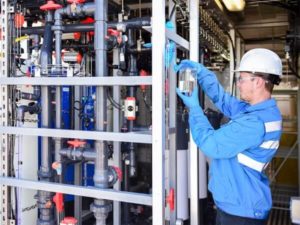
Heavy industry, manufacturing, and natural resource-based industries often use large volumes of water and generate wastewaters requiring treatment. Saltworks designs, builds, and operates advanced wastewater treatment plants that economically and reliably treat tough industrial wastewaters.
The manufacturing of microelectronics generates unique wastewaters. Saltworks can help you to manage wastewater flows from microelectronics production, targeting fluoride, ammonia, metals, and ions, reducing brine waste, and allowing water reuse.
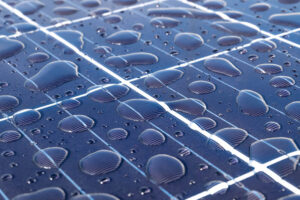
Solar PVs manufacturing facilities produce industrial wastewater streams with complex chemistries, which must be managed for reuse, discharge, or disposal. Constituents of concern include fluoride, organics, metals, suspended solids, acids, alkalis, and others.